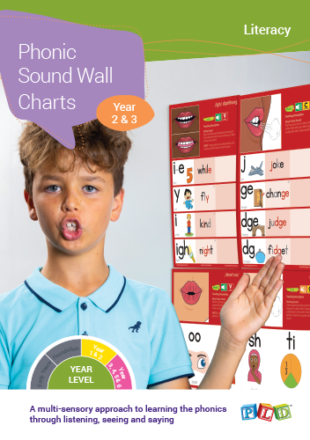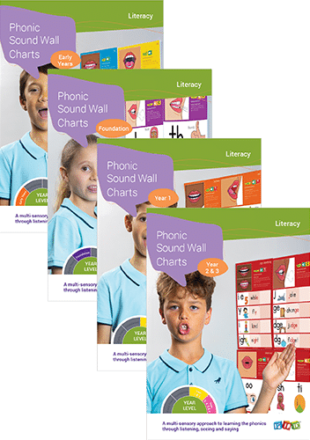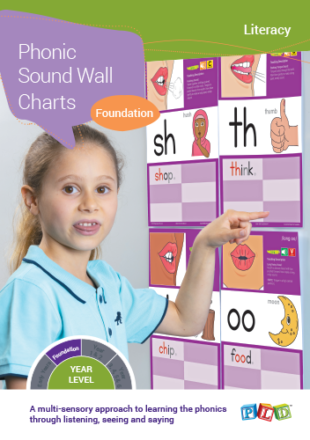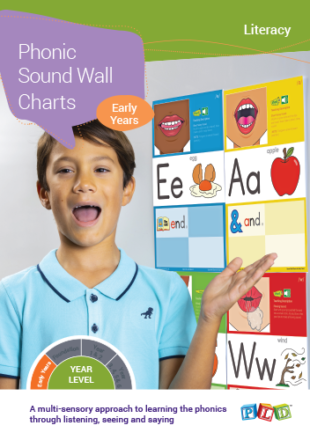Age
Showing 161–176 of 459 results
-
Home Reading Books (Set 1) VC & CVC – Foundation Semester 1
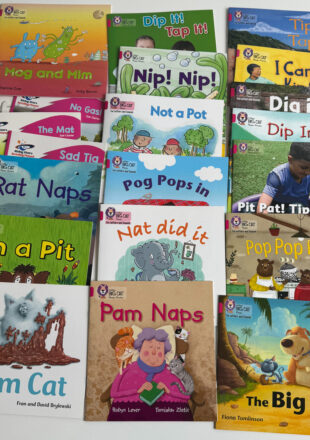
31 Decodable VC & CVC Home Reading Books with irregular high frequency words & phonic concepts
The 31 modern and engaging decodable reading books in this curated set align with the PLD’s evidence-based Structured Synthetic Phonics program. These take-home reading books
$270.00[flipbook-popup id=''][/flipbook-popup] -
Dandelion Readers (Set 1) VC & CVC – Foundation Semester 1

30 Decodable VC & CVC Home Reading Books with minimal irregular high frequency words
The 30 modern and engaging decodable reading books in this curated set align with the PLD’s evidence-based Structured Synthetic Phonics program. These take-home reading books
$180.00[flipbook-popup id=''][/flipbook-popup] -
Dandelion Readers (Set 2) Stage 1 Target 2 Digraphs & CCVC & CVCC – Foundation Semester 2

20 Decodable Home Reading Books with Stage 1 Target 2 Digraphs (eg: ch, sh, th, ck, ng, wh, qu etc) & Stage 1 Target 3 CCVC & CVCC.
The 20 modern and engaging decodable reading books in this set align with the PLD’s evidence-based Structured Synthetic Phonics program. These take-home reading books have
$120.00[flipbook-popup id=''][/flipbook-popup] -
Dandelion Launchers (Set 2) Stage 1 Target 2 Digraphs & CCVC & CVCC – Foundation Semester 2
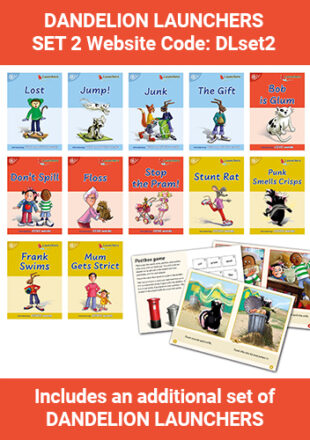
32 Decodable Home Reading Books with Stage 1 Target 2 Digraphs (eg: ch, sh, th, ck, ng, wh, qu etc) & CCVC & CVCC
The 32 modern and engaging decodable reading books in this curated set align with the PLD’s evidence-based Structured Synthetic Phonics program. These take-home reading books
$190.00[flipbook-popup id=''][/flipbook-popup] -
Decodable Reading Price List

Structured Synthetic Phonics (SSP) is reported to be the most effective way to teach reading. To support quality SSP instruction, it is essential to equip early readers with decodable reading material. These texts facilitate rich opportunities for students to rehearse their decoding skills in a context that gradually increases in complexity and length. PLD has […]
Structured Synthetic Phonics (SSP) is reported to be the most effective way to teach reading. To support quality SSP instruction, it is essential to equip
-
Junior, Middle & Upper Primary Catch-Up Reading Books: Dragon Eggs Series (Set 1)

10 Decodable Reading Books for Students Requiring Stages 1, 2 & 3
This set of 10 titles is aligned with PLD’s Stage 1, 2 & 3. In the series, Bella the dragon has lost her eggs in
$105.00[flipbook-popup id=''][/flipbook-popup] -
Generating Narratives – Set 1 – Individual Licence
 This is a PLD Individual Licence resource. By purchasing this licence, this program will be accessible as a digital flipbook that will be stored in your secure account on the PLD website and may only be accessed by an individual user, being the Purchaser. The program will be accessible as a digital flipbook that can be accessed by the purchaser on any device for as long as the licence is active. An Individual Licence is valid for 12 months from the date of purchase. Sharing of an Individual Licence or account credentials for the purpose of sharing an Individual Licence is a breach of Australian Copyright Law and PLD Terms of Use. For more information, visit our Individual Licence FAQ.
This is a PLD Individual Licence resource. By purchasing this licence, this program will be accessible as a digital flipbook that will be stored in your secure account on the PLD website and may only be accessed by an individual user, being the Purchaser. The program will be accessible as a digital flipbook that can be accessed by the purchaser on any device for as long as the licence is active. An Individual Licence is valid for 12 months from the date of purchase. Sharing of an Individual Licence or account credentials for the purpose of sharing an Individual Licence is a breach of Australian Copyright Law and PLD Terms of Use. For more information, visit our Individual Licence FAQ.Building Verbal and Written Expression Through Picture Prompts Generating Narratives – Set 1 supports Year 1 to 6 students develop verbal and written storytelling skills.
$22.50 / month[flipbook-popup id=''][/flipbook-popup] -
Phonic Sound Wall Charts for Foundation – Individual Licence
This is a PLD Individual Licence resource. By purchasing this licence, this program will be accessible as a digital flipbook that will be stored in your secure account on the PLD website and may only be accessed by an individual user, being the Purchaser. The program will be accessible as a digital flipbook that can be accessed by the purchaser on any device for as long as the licence is active. An Individual Licence is valid for 12 months from the date of purchase. Sharing of an Individual Licence or account credentials for the purpose of sharing an Individual Licence is a breach of Australian Copyright Law and PLD Terms of Use. For more information, visit our Individual Licence FAQ.A multi-sensory approach to learning alphabet sounds through listening, seeing and saying. What are the features of PLD’s Sound Wall Charts? Teaching the 44 speech
$27.50 / year[flipbook-popup id=''][/flipbook-popup] -
Phonic Sound Wall Charts for Year 2 & 3
What are the features of PLD’s Sound Wall Charts? Teaching the 44 speech sounds of the English language requires accurate modelling and articulation, pedagogy that sound walls support. The PLD sound wall charts focus on the phonemes (or individual sounds) of speech and link to the PLD scheduled phonic sequence. Each phoneme-specific chart features: Charts focused upon the phonemes and phonics for an Early Years class. The corresponding visual of a mouth. A simple description (e.g. tongue tapping sound, lip popping sound, peeking tongue sound, coughing or huffing sound) A detailed description. Icons identifying if the phoneme is a long or short, quiet or noisy, or vowel or consonant sound. Areas to add words (making the charts interactive rather than static). The related phonic concepts for each year level. What is a sound wall display? A sound wall is an interactive display of phonic concepts and words that is organised by and/or emphasises individual sounds (phonemes). Commonly there is one wall for consonants and one for vowels. Sound walls focus on the formation of phonemes which gives young students a structure that helps them understand the foundation of language and written literacy. As we know from current research about the science of reading, children learn to read through the application of orthographic mapping, a speech-to-print process where letters are mapped to known speech sounds. Teachers need to harness this modern understanding by using sound wall displays as a teaching and learning tool in their classrooms to support the process of learning to read and spell. Other Sound Wall Charts Pack: Phonic Sound Wall Charts for the Early Years (26 A4 coloured charts which focus on the alphabet) Phonic Sound Wall Charts for Foundation (42 A4 coloured charts which focus on the alphabet and Stage 1 digraphs) Phonic Sound Wall Charts for Year 1 (49 A4 coloured charts which focus on Stage 1 & Stage 2 digraphs) Phonic Sound Wall Charts for Year 2 & 3 (71 A4 coloured charts which focus on Stage 1, Stage 2 & Stage 3 digraphs) Full Set of Phonic Sound Wall Charts Recommended Reading: Tips for Getting the Most Out of Sound Wall Charts Sound Walls & Structured Synthetic Phonics Programs
$55.00$55.00 incl. GST[flipbook-popup id=''][/flipbook-popup] -
Sale!
Full Set of Phonic Sound Wall Charts
The Phonic Sound Wall bundle contains the full range you need for teaching Early Years – Stage 3. This bundle has been discounted 15% off the full retail price and includes: Phonic Sound Wall Charts for the Early Years Phonic Sound Wall Charts for Foundation Phonic Sound Wall Charts for Year 1 Phonic Sound Wall […]
The Phonic Sound Wall bundle contains the full range you need for teaching Early Years – Stage 3. This bundle has been discounted 15% off
From $187.00 -
Phonic Sound Wall Charts for Year 1
What are the features of PLD’s Sound Wall Charts? Teaching the 44 speech sounds of the English language requires accurate modelling and articulation, pedagogy that sound walls support. The PLD sound wall charts focus on the phonemes (or individual sounds) of speech and link to the PLD scheduled phonic sequence. Each phoneme-specific chart features: Charts focused upon the phonemes and phonics for an Early Years class. The corresponding visual of a mouth. A simple description (e.g. tongue tapping sound, lip popping sound, peeking tongue sound, coughing or huffing sound) A detailed description. Icons identifying if the phoneme is a long or short, quiet or noisy, or vowel or consonant sound. Areas to add words (making the charts interactive rather than static). The related phonic concepts for each year level. What is a sound wall display? A sound wall is an interactive display of phonic concepts and words that is organised by and/or emphasises individual sounds (phonemes). Commonly there is one wall for consonants and one for vowels. Sound walls focus on the formation of phonemes which gives young students a structure that helps them understand the foundation of language and written literacy. As we know from current research about the science of reading, children learn to read through the application of orthographic mapping, a speech-to-print process where letters are mapped to known speech sounds. Teachers need to harness this modern understanding by using sound wall displays as a teaching and learning tool in their classrooms to support the process of learning to read and spell. Other Sound Wall Charts: Phonic Sound Wall Charts for the Early Years (26 A4 coloured charts which focus on the alphabet) Phonic Sound Wall Charts for Foundation (42 A4 coloured charts which focus on the alphabet and Stage 1 digraphs) Phonic Sound Wall Charts for Year 1 (49 A4 coloured charts which focus on Stage 1 & Stage 2 digraphs) Phonic Sound Wall Charts for Year 2 & 3 (71 A4 coloured charts which focus on Stage 1, Stage 2 & Stage 3 digraphs) Full set of Phonic Sound Wall Charts Recommended Reading: Tips for Getting the Most Out of Sound Wall Charts Sound Walls & Structured Synthetic Phonics Programs
$55.00$55.00 incl. GST[flipbook-popup id=''][/flipbook-popup] -
Phonic Sound Wall Charts for Foundation
What are the features of PLD’s Sound Wall Charts? Teaching the 44 speech sounds of the English language requires accurate modelling and articulation, pedagogy that sound walls support. The PLD sound wall charts focus on the phonemes (or individual sounds) of speech and link to the PLD scheduled phonic sequence. Each phoneme-specific chart features: Charts focused upon the phonemes and phonics for a Foundation class. The corresponding visual of a mouth. A simple description (e.g. tongue tapping sound, lip popping sound, peeking tongue sound, coughing or huffing sound) A detailed description. Icons identifying if the phoneme is a long or short, quiet or noisy, or vowel or consonant sound. Areas to add words (making the charts interactive rather than static). The related phonic concepts for each year level. What is a sound wall display? A sound wall is an interactive display of phonic concepts and words that is organised by and/or emphasises individual sounds (phonemes). Commonly there is one wall for consonants and one for vowels. Sound walls focus on the formation of phonemes which gives young students a structure that helps them understand the foundation of language and written literacy. As we know from current research about the science of reading, children learn to read through the application of orthographic mapping, a speech-to-print process where letters are mapped to known speech sounds. Teachers need to harness this modern understanding by using sound wall displays as a teaching and learning tool in their classrooms to support the process of learning to read and spell. Other Sound Wall Charts: Phonic Sound Wall Charts for the Early Years (26 A4 coloured charts which focus on the alphabet) Phonic Sound Wall Charts for Foundation (42 A4 coloured charts which focus on the alphabet and Stage 1 digraphs) Phonic Sound Wall Charts for Year 1 (49 A4 coloured charts which focus on Stage 1 & Stage 2 digraphs) Phonic Sound Wall Charts for Year 2 & 3 (71 A4 coloured charts which focus on Stage 1, Stage 2 & Stage 3 digraphs) Full set of Phonic Sound Wall Charts Recommended Reading: Tips for Getting the Most Out of Sound Wall Charts Sound Walls & Structured Synthetic Phonics Programs
$55.00$55.00 incl. GST[flipbook-popup id=''][/flipbook-popup] -
Phonic Sound Wall Charts for Early Years
What are the features of PLD’s Sound Wall Charts? Teaching the 44 speech sounds of the English language requires accurate modelling and articulation, pedagogy that sound walls support. The PLD sound wall charts focus on the phonemes (or individual sounds) of speech and link to the PLD scheduled phonic sequence. Each phoneme-specific chart features: Charts focused upon the phonemes and phonics for an Early Years class. The corresponding visual of a mouth. A simple description (e.g. tongue tapping sound, lip popping sound, peeking tongue sound, coughing or huffing sound) A detailed description. Icons identifying if the phoneme is a long or short, quiet or noisy, or vowel or consonant sound. Areas to add words (making the charts interactive rather than static). The related phonic concepts for each year level. What is a sound wall display? A sound wall is an interactive display of phonic concepts and words that is organised by and/or emphasises individual sounds (phonemes). Commonly there is one wall for consonants and one for vowels. Sound walls focus on the formation of phonemes which gives young students a structure that helps them understand the foundation of language and written literacy. As we know from current research about the science of reading, children learn to read through the application of orthographic mapping, a speech-to-print process where letters are mapped to known speech sounds. Teachers need to harness this modern understanding by using sound wall displays as a teaching and learning tool in their classrooms to support the process of learning to read and spell. Other Sound Wall Charts: Phonic Sound Wall Charts for the Early Years (26 A4 coloured charts which focus on the alphabet) Phonic Sound Wall Charts for Foundation (42 A4 coloured charts which focus on the alphabet and Stage 1 digraphs) Phonic Sound Wall Charts for Year 1 (49 A4 coloured charts which focus on Stage 1 & Stage 2 digraphs) Phonic Sound Wall Charts for Year 2 & 3 (71 A4 coloured charts which focus on Stage 1, Stage 2 & Stage 3 digraphs) Full Set of Phonic Sound Wall Charts Recommended Reading: Tips for Getting the Most Out of Sound Wall Charts Sound Walls & Structured Synthetic Phonics Programs
$55.00$55.00 incl. GST[flipbook-popup id=''][/flipbook-popup] -
Phonic Sound Wall Charts for Early Years – eBook






